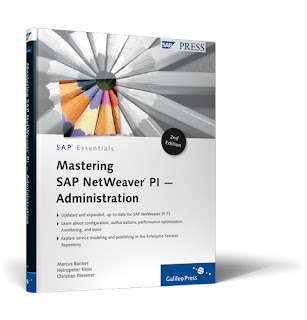Mastering the SAP NetWeaver
PI - Management (2nd Edition) Description
Systems in the infrastructure layer, the SAP NetWeaver PI plays a role in the company. But how do you keep it working properly? This book answers your questions. For example, using a scenario in great detail, the authors of all administrative tasks for you and offers helpful tips for everyday work.
Basic Configuration
Many parameters to configure the application server and the SAP NetWeaver PI, and learn what are the recommended settings.
SLD and the Enterprise Services Repository
Software components, services SLD modeling of the bridge, and publications, and more to create and manage IT infrastructure to manage the most important out of two vehicles.
Legend and performance monitoring
Master the central management tasks: Define who has authority to ensure the timely processing of messages, use and focused on the monitoring options.
Images of a large number of concrete instructions
Learn step by step how to perform an essential task for everyone. And lead to a detailed description of the menu shows a variety of forms.
Expert advice for real life
Benefit from the authors' experience with client projects. The application is designed to help you get quick results-oriented descriptions focus on the practical application.
Features of Mastering SAP NetWeaver PI — Administration (2nd Edition)
- Setting IP and application server
- Enterprise Content import
- Configuration System Landscape Directory
- Services configuration change management and CTS +
- Roles, authorization and Single Sign-On
- Monitoring and improving performance
- Work with Enterprise Services Repository
About the Author (s)
Specializing in SAP NetWeaver PI Marcus Banner, Heinzpeter RealCore Klein and Consulting GmbH, Essen, Germany Christian Riesener a technology consulting company. They have supported the development and use of the first version of IP.

No comments:
Post a Comment